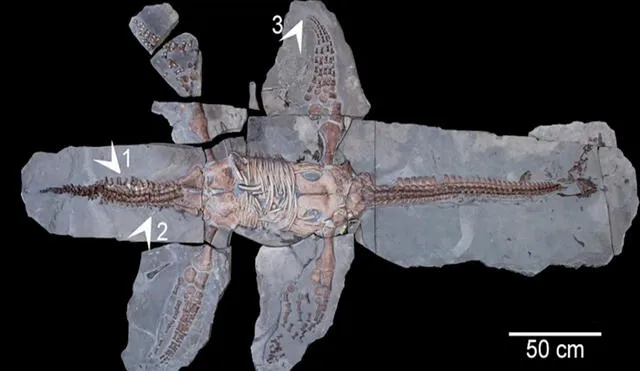Jurassic-era fossil reveals stunning new insights—Scientists are amazed
Researchers at Lund University in Sweden have analyzed the soft tissue from a Jurassic-era fossilized plesiosaur for the first time.

The plesiosaur is a marine ancient species, and it is considered to have been a successful predator due to its underwater hunting endeavors. This animal had turtle-like scales that covered its body. Scientists recently discovered this feature due to the presence of soft tissue (which is extremely rare) in a newly unearthed fossil, as mentioned in a paper published earlier this month in Current Biology.
For the first time in history, a group of researchers from the Lund University in Sweden examined the soft tissue from a 183 million-year-old plesiosaur. This happened after the fossil was found intact near Holzmaden, Germany.
Why are scientists amazed?
This particular finding in the species' fossil was groundbreaking, as fossilized soft tissue is exceptionally rare in plesiosaur fossils. The skin and internal organs were in good condition, which allowed researchers to better analyze it. This was confirmed by Miguel Marx, a Ph.D. student in geology at Lund University and the lead author of the study, said in a video published on the university's website.
"I was shocked when I saw skin cells that had been preserved for 183 million years," Marx pointed out. "It was almost like looking at modern skin." The preserved skeleton of the plesiosaur is articulated with fossilized soft tissue from the tail and one of the flippers, he added.
What did the plesiosaur look like?
Findings of the study revealed that the plesiosaur had both scaly and smooth skin. This might have allowed it to swim rapidly and move along rough seabeds. "This mosaic of scales and scaly skin has never been reported before in a plesiosaur, and thanks to this amazing find, we now have a much better appreciation of what these animals might have looked like while alive," Johan Lindgren, professor of geology at Lund University, said in a statement.
The species of the plesiosaur is considered as the most successful marine hunters of their period. This long-necked animal had a size of 40 feet long, as well as four paddle-like flippers which allowed it to swim similarly to sea turtles. 200 years ago, the plesiosaur was first studied, but there was little information about its external anatomy until this newest fossil discovery.
What does it mean for science?
The findings of the Sweden research could lead to enhance the understanding of macroevolution. Also, it shows how species have adapted to specific environments over time, according to the paper.
"The discovery of scales was surprising and changes our perceptions of how these animals would have adapted to their pelagic environment," Marx said.












